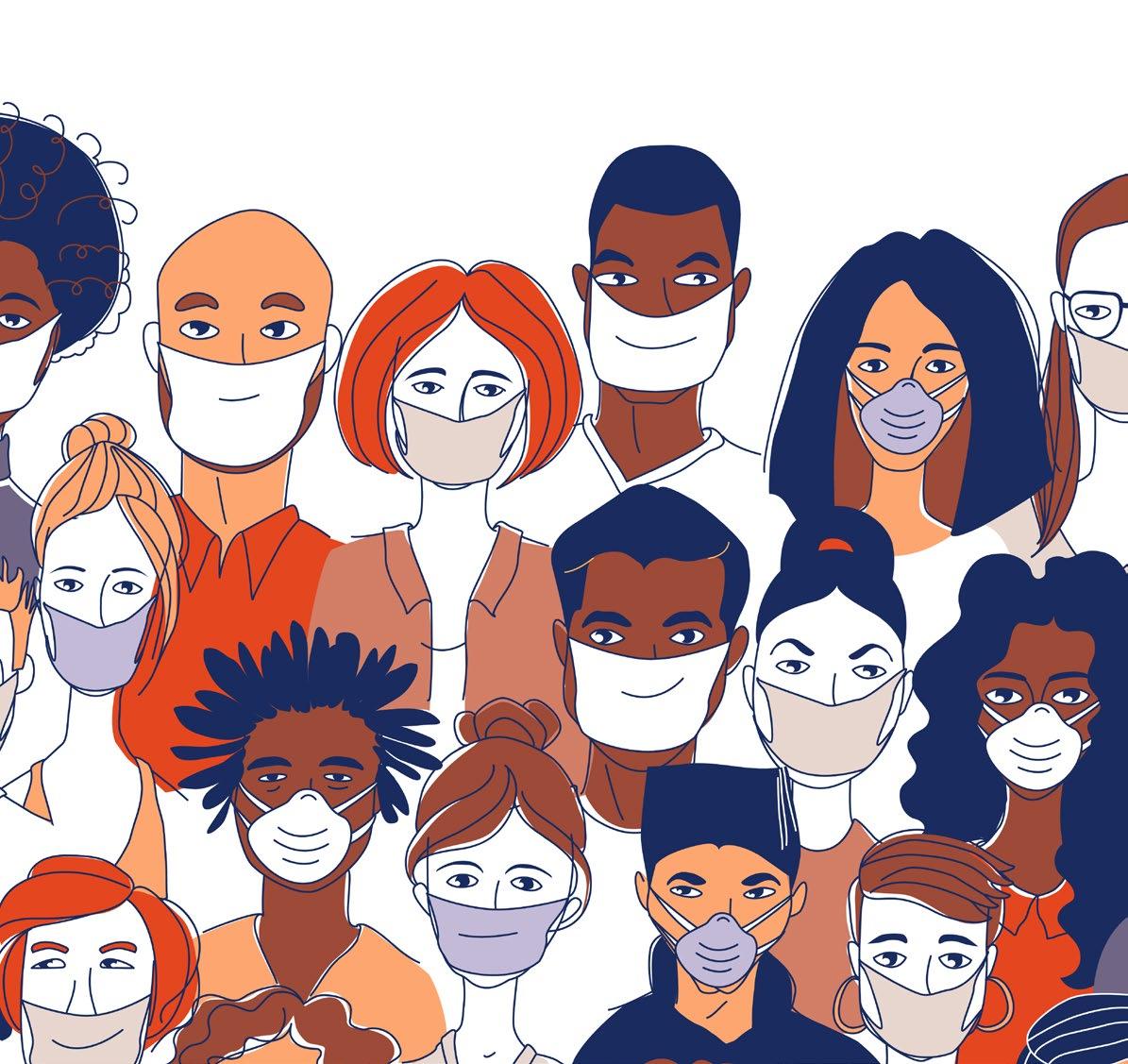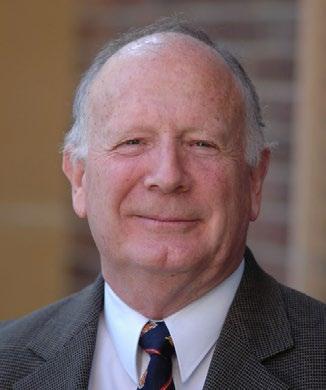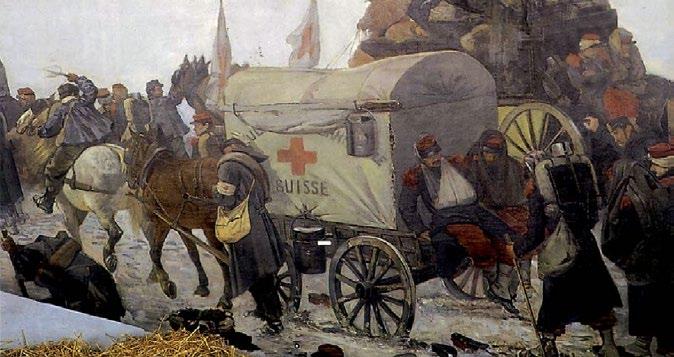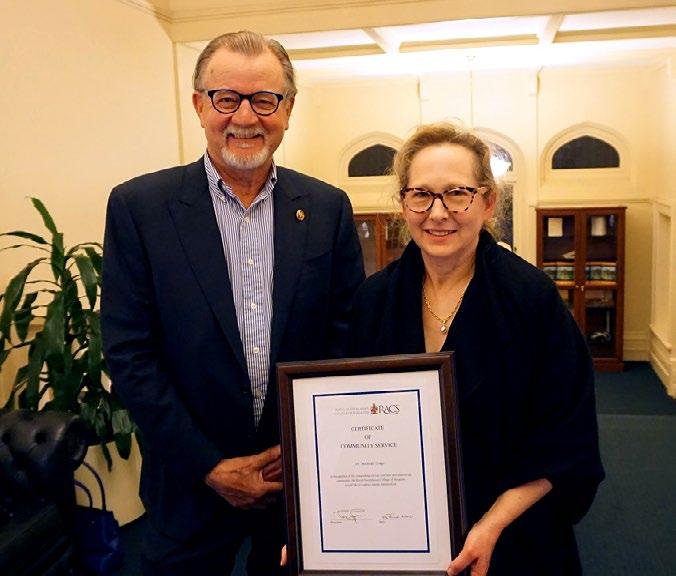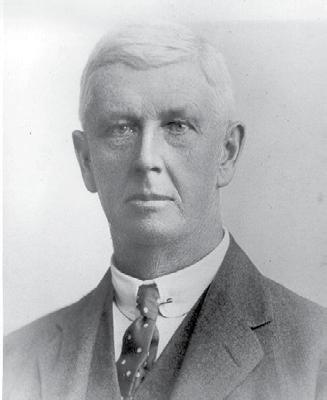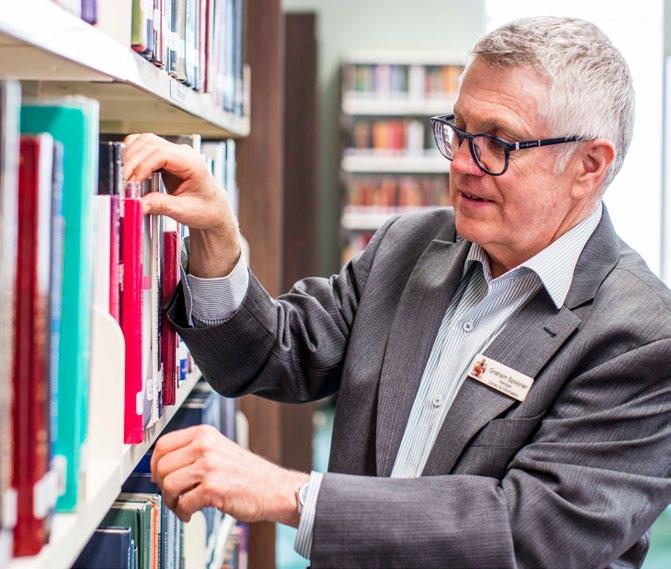
6 minute read
in Australian prisoners
The 1929 Geneva Convention on the Treatment of Prisoners of War stipulated that all prisoners ‘should at all times be humanely treated’. It states that prisoners should be employed in accordance to their physical fitness – that the duration of daily work should not exceed that of the local population employed in the same type of work, and that 24 full hours of rest ought to be allowed every Sunday. The Convention also demands that sufficient food rations and water be supplied to all prisoners. Importantly, it states that ‘prisoners of war shall have no direct connection with the operation of the war’ and they should not be employed in ‘unhealthy or dangerous work’. The Convention demands that sick prisoners suffering from specific diseases such as an enlarged liver caused by malaria, and by inference from other infectious diseases, be repatriated. A recent search in the National Archives of Australia shows that in 1941, on the island of Crete, the German Army perpetrated war crimes against a group of Australian soldiers, while a German physician committed crimes against humanity. The war on Crete began with a surprise paratrooper attack by the Germans on 20 May 1941. The resistance by the Australians and New Zealanders was ferocious, and there were 600 Australian deaths and 220 Australians injured. Ultimately, there was a German victory and occupation that lasted until 1944. The first infringement of the Geneva Convention occurred when Australian prisoners were employed in construction work at the aerodrome, and later at other military facilities, with insufficient food supply. The second infringement occurred once the war turned against the Axis powers, when just over 1000 prisoners were transported to forced labour camps in Germany (stalags). They stayed there until May 1945, working under severe conditions in unhygienic surroundings. These are revealed in the testimony of Private George, SA, given in 1942 to the Australian Military Authorities. He had been captured by the Germans in June 1941 on the island of Crete, and forced to work in the construction of military facilities. He worked 10 hours each day until he escaped in July 1941. He was re-captured, court-martialled and condemned to hard construction labour near the Rethymno General Hospital, renamed the German Military Hospital. He reported that the rations were “one meal a day (one slice of bread and cooked beans) and half a pint of water, twice a day”. The third and most serious of the infringements were the crimes against humanity perpetrated by a German doctor in Crete. The physician selected five young Australian prisoners from the construction site. They were physically examined, had blood and urine tests conducted and X-rays performed. The soldiers were declared ‘sick’, despite no physical complaints, and were admitted to the hospital ward, which was full of very unwell German soldiers. Private George, one of the Australians stated, “the doctor … withdrew blood from a German patient and immediately injected it into my vein in my arm … Within the space of 24 hours, all became very sick.” On day 10, further blood was injected, “on this occasion in the buttocks … all were very sick”. The Australians protested. “We all knew that we were being used for experimental purposes and objected,” Private George reported. Subsequently, they were released and returned to their camp. Private George finally managed to escape and returned to Australia via Egypt. Who was the German physician at the Cretan hospital? The presence of Dr Friedrich Meythaler in Crete, and his subsequent publications, are congruent with the Australian soldier’s testimony.
Advertisement
Dr Meythaler was a renowned bacteriologist with numerous prewar publications on the liver and infectious diseases, and later in his career on diabetes and insulin related malfunctions. Dr Meythaler was born in 1898. He studied medicine at the eminent universities of Heidelberg and Munich and graduated in 1922. He joined the Sturmabteilung, the Nazi paramilitary wing, early in the new regime in 1933, and his career progressed rapidly. He was named an associate professor in 1939. The war took him to Crete as a staff physician, dealing with infectious diseases affecting the invading forces. Hepatitis was one of the endemic diseases in the Mediterranean area, and an area of interest to the doctor. The German soldiers in the hospital were jaundiced, and Dr Meythaler was looking for proof of transmission of hepatitis. Accordingly, he investigated and published an article in a German medical journal in 1942, revealing that “I carried out on Crete transmission experiments from person to person Way back when I started my library career librarians did really ‘collect’ and build ‘collections’. Mostly, it was actual books, but library services were starting to move into cassettes or video cassettes before CDs and DVDs also found their way onto the shelves. Academic library shelves were filled with journals, with binders doing a good job of turning individual issues into bound volumes that required more and more shelf space. These days, librarians still put much of their time into building collections to anticipate and meet their patrons’ study, work and leisure needs. However, building a collection in 2020 involves many different processes. Most of the traditional print publishers, such as Elsevier, Springer, Wiley and Oxford have turned their hand to making their titles available online. So, now, rather than buying a print copy of a journal, binding it through transfer of blood … in three of the experimental subjects … distinct liver enlargement was observed.” Dr Meythaler was professionally promoted to full professorship at the Nuremberg University Hospital in 1942. In1947, he became Director of Medicine in the Nuremberg Hospital, and at neighbouring Erlangen University. There is no record of him being tried for any infringement of human rights. This Nazi physician was guilty of crimes against humanity for non-consensual medical experimentations. The doctor forfeited his Hippocratic obligations and caused the suffering of human beings. He should have been charged with crimes against humanity, as defined by the Nuremberg Trials in 1947. This reported case is considered the first documented medical experiment on an Australian prisoner of war.
Dr George M Weisz, FRACS and keeping it on the shelves, librarians need to basically ‘rent’ access to content available in larger and larger databases. Our library clients work and research in a number of specialties and subspecialties, so part of the collection development process is to do our best to ensure all these areas are covered. The specialty pages on the library website provide listings and links to key and popular e-resources. Suggestions for additions to these pages are always welcome. Like many libraries, the Royal Australasian College of Surgeons (RACS) library builds its collection by combining large packages offered by journal publishers with a range of subscriptions to individual e-journal or e-book titles. When putting together these packages many publishers include non-print, multimedia materials.
Library collections: beyond books
2020 Surgical Workforce Census Look out for your email invitation to be part of the 2020 RACS Surgical Workforce Census in November. The Surgical Workforce Census is conducted every two years, collecting important data to inform advocacy and workforce planning. Key data collected includes work patterns (employment status, hours worked, private/ public mix), characteristics of the rural and regional workforce, health and wellbeing, contribution to the SET Program and future work intentions, including retirement. All active and Fellows who live in Australia and New Zealand will receive an invitation to complete the census using the email address registered with the College. All Fellows who participate will go into a draw to win a $500 gift card. Your participation is vital to help shape the future of surgery. Email workforce@
surgeons.org for further information. Multimedia content • ClinicalKey Extensive e-journal and e-book online collections can be found at wwwclinicalkey-com-au.ezproxy.surgeons. org, with options to browse procedure videos, use the Presentation Maker with images, or access ClinicalKey Patient Education materials. • Access Surgery and Access Medicine These resources can be found at: https:// accesssurgery-mhmedical-com.ezproxy. surgeons.org/ and https://accessmedicine-mhmedical-com. ezproxy.surgeons.org/ respectively. They include videos, patient education handouts and selected episodes from the ‘Behind the Knife’ surgical education podcast.

